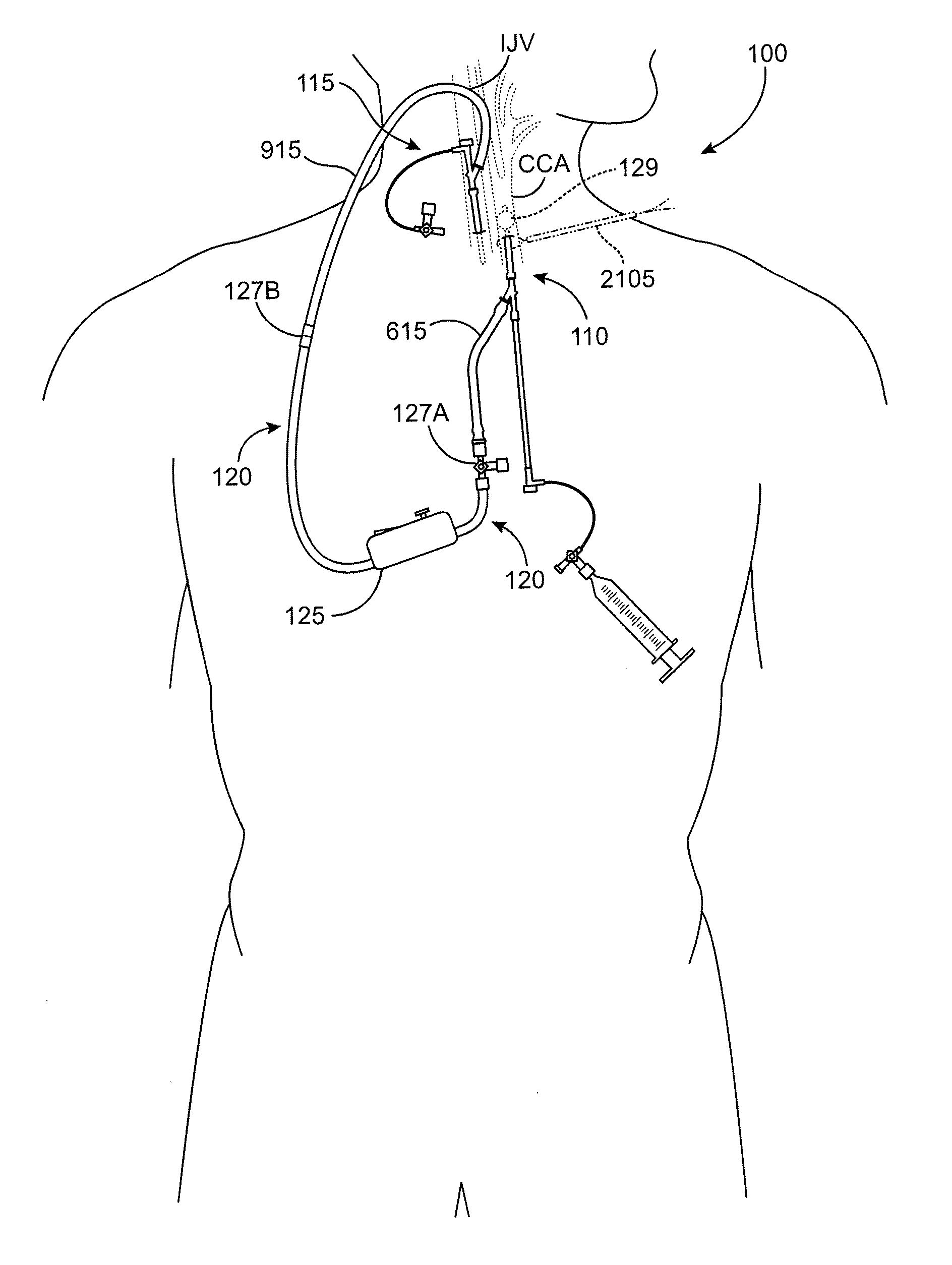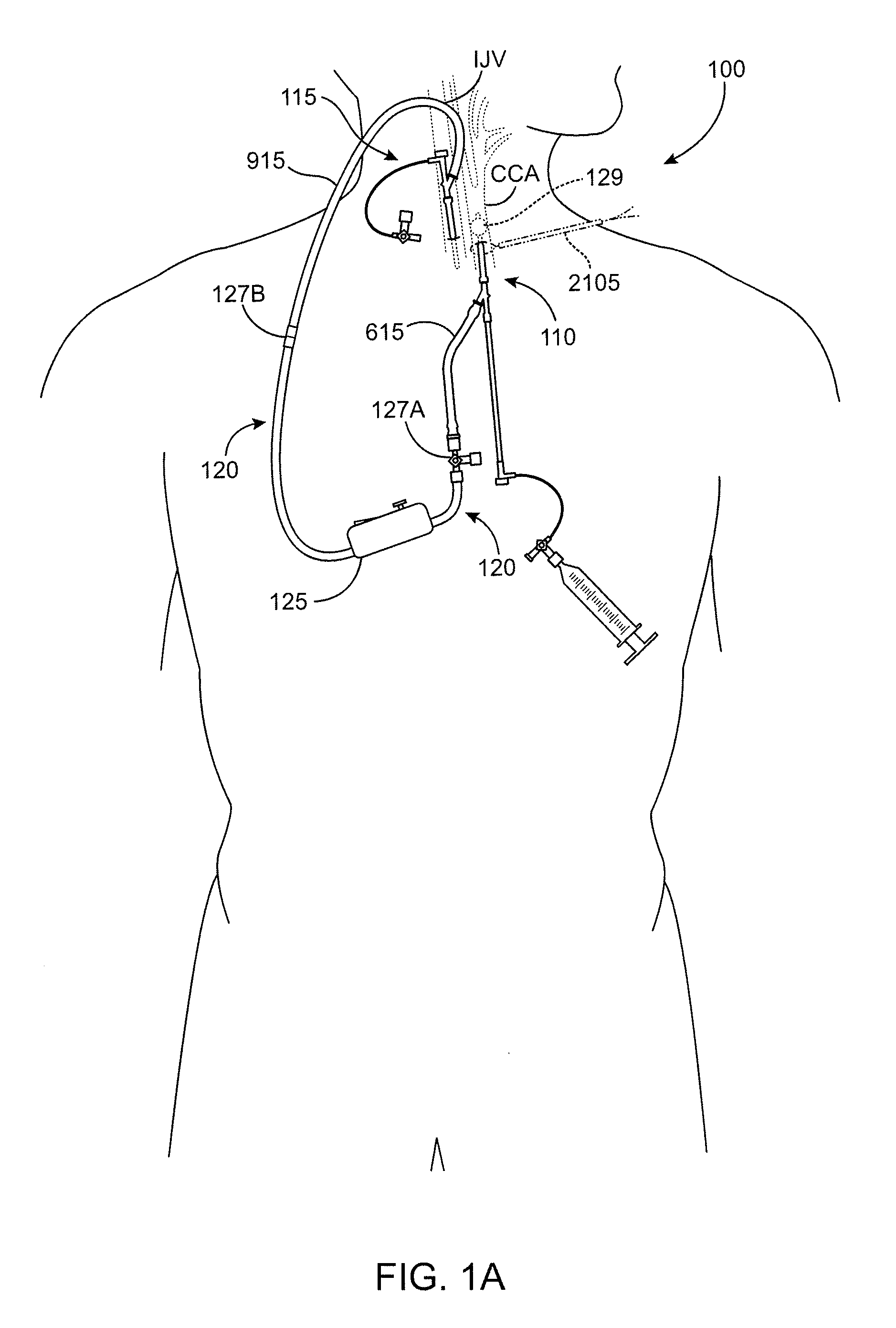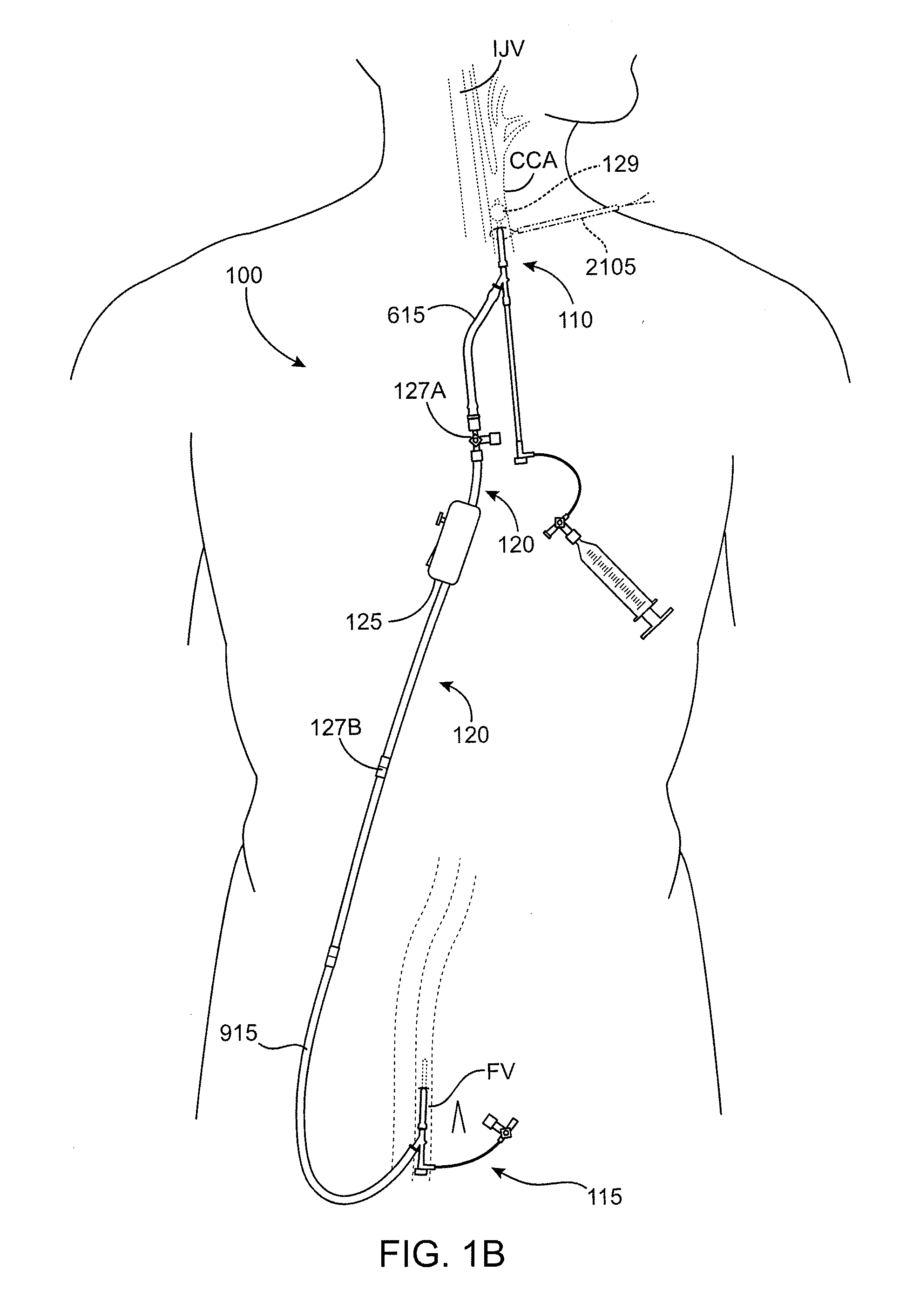Methods and systems for establishing retrograde carotid arterial blood flow
a technology of carotid arterial blood flow and methods, applied in blood vessels, prostheses, catheters, etc., can solve the problems of ischemic stroke, neurologic consequences, risk of embolic particles entering the cerebral vasculature, transient ischemic attack tia, etc., and achieve the effect of enhancing reverse flow
- Summary
- Abstract
- Description
- Claims
- Application Information
AI Technical Summary
Benefits of technology
Problems solved by technology
Method used
Image
Examples
Embodiment Construction
[0053]FIG. 1A shows a first embodiment of a retrograde flow system 100 that is adapted to establish and facilitate retrograde or reverse flow blood circulation in the region of the carotid artery bifurcation in order to limit or prevent the release of emboli into the cerebral vasculature, particularly into the internal carotid artery. The system 100 interacts with the carotid artery to provide retrograde flow from the carotid artery to a venous return site, such as the internal jugular vein (or to another return site such as another large vein or an external receptacle in alternate embodiments.) The retrograde flow system 100 includes an arterial access device 110, a venous return device 115, and a shunt 120 that provides a passageway for retrograde flow from the arterial access device 110 to the venous return device 115. A flow control assembly 125 interacts with the shunt 120. The flow control assembly 125 is adapted to regulate and / or monitor the retrograde flow from the common c...
PUM
 Login to View More
Login to View More Abstract
Description
Claims
Application Information
 Login to View More
Login to View More - R&D
- Intellectual Property
- Life Sciences
- Materials
- Tech Scout
- Unparalleled Data Quality
- Higher Quality Content
- 60% Fewer Hallucinations
Browse by: Latest US Patents, China's latest patents, Technical Efficacy Thesaurus, Application Domain, Technology Topic, Popular Technical Reports.
© 2025 PatSnap. All rights reserved.Legal|Privacy policy|Modern Slavery Act Transparency Statement|Sitemap|About US| Contact US: help@patsnap.com



